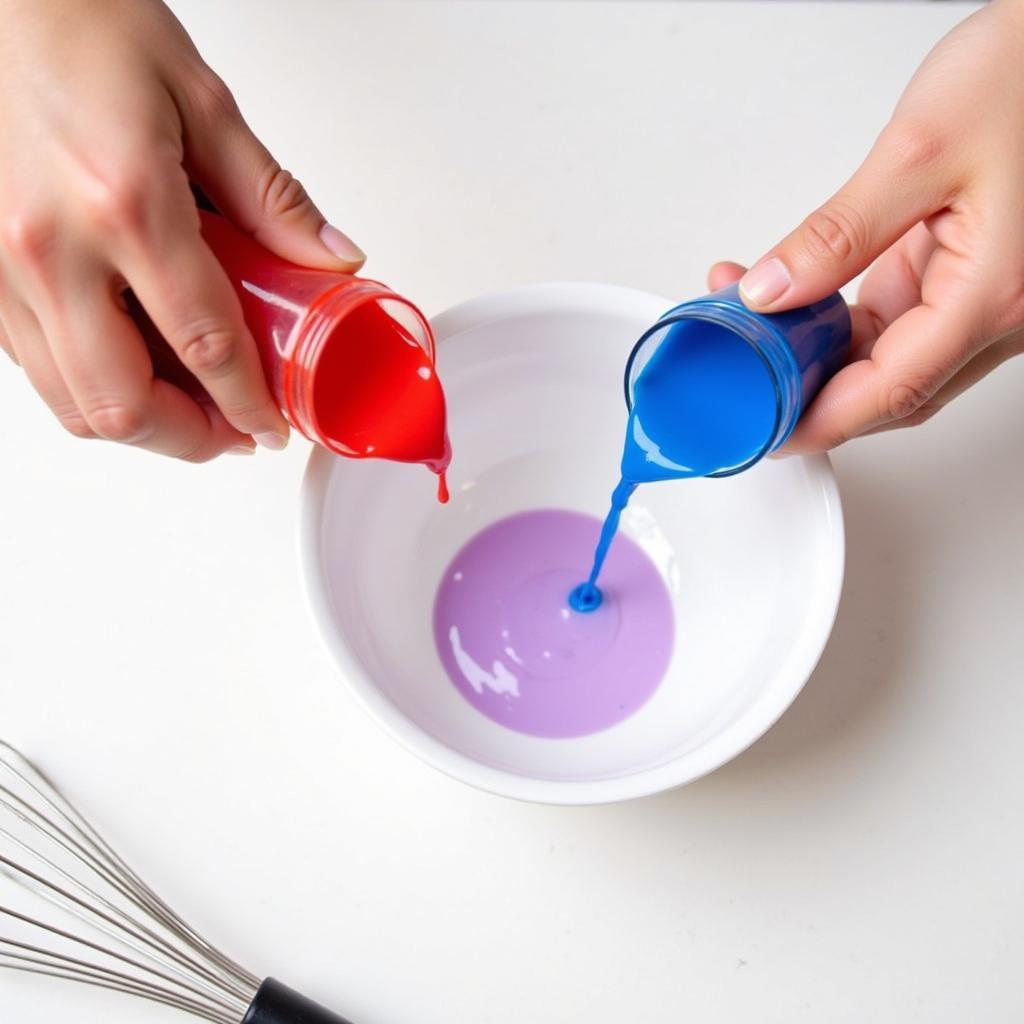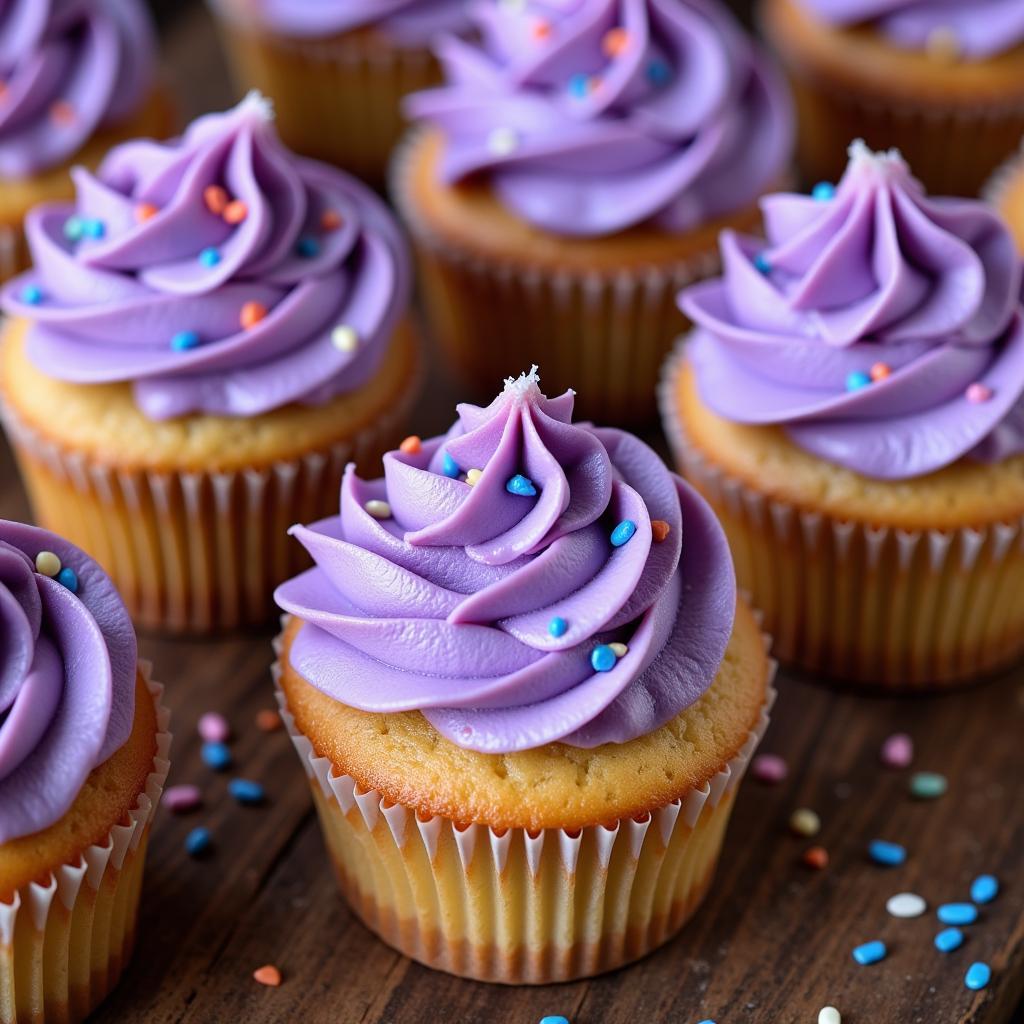Creating vibrant purple food coloring is easier than you think! Whether you’re baking a galaxy-themed cake, whipping up colorful frosting, or dyeing Easter eggs, achieving that perfect shade of purple is key. This guide explores several methods to achieve that perfect bright purple food coloring, from using readily available red and blue hues to exploring natural alternatives. Let’s dive in and unlock the secrets to a world of vibrant purple possibilities. Learn how you make purple color and transform your culinary creations into masterpieces.
Mastering the Mix: Red and Blue Food Coloring
The foundation of purple lies in the harmonious blend of red and blue. However, the specific shades of red and blue significantly impact the final purple hue. Experimenting with different ratios is key to finding your desired vibrant shade.
- Start with equal parts: Begin with equal drops of red and blue food coloring. Observe the resulting purple and adjust from there.
- More red for a reddish-purple: If you desire a warmer, more magenta-like purple, gradually add more red drops, mixing thoroughly after each addition.
- More blue for a bluish-purple: For a cooler, more periwinkle or lavender hue, increase the blue drops incrementally.
Remember, the intensity of your food coloring also plays a role. Gel or paste food colorings are generally more concentrated than liquid varieties, requiring fewer drops for a vibrant color payoff.
 Mixing Red and Blue Food Coloring
Mixing Red and Blue Food Coloring
Exploring Natural Alternatives for Purple Food Coloring
For those seeking natural alternatives, nature provides a few options, although achieving a truly bright purple can be more challenging.
- Red Cabbage: Red cabbage, when boiled, releases a natural purple dye. However, the intensity and hue can vary depending on the pH of the ingredients you’re adding it to.
- Blueberries & Blackberries: These berries offer a deep bluish-purple hue, best suited for coloring icings or jams. Their natural sugars may alter the sweetness of your recipe.
how to dye flowers using food coloring uses similar principles, highlighting the versatility of food coloring in different applications.
Troubleshooting Common Purple Food Coloring Challenges
Achieving that perfect vibrant purple can sometimes be tricky. Here are a few common challenges and how to overcome them:
My Purple is Too Dull
- Concentrated Colorings: Consider switching to gel or paste food colorings for a more vibrant result.
- Adjusting Ratios: Experiment with slightly more red or blue, depending on the desired tone.
My Purple is Too Red/Blue
- Gradual Adjustments: Add small drops of the opposing color (blue if too red, red if too blue) until the desired balance is achieved.
“Remember, patience is key when working with food coloring. Start small and adjust gradually to avoid over-coloring,” advises renowned pastry chef, Amelia Dubois.
Creating Custom Purple Shades: Beyond the Basics
Once you’ve mastered the basic red and blue mix, explore creating unique purple shades. how to make fuchsia color icing offers insights into creating another vibrant shade by combining colors. Adding a touch of black can deepen the purple, while a hint of white can create pastel shades. Experimentation is your best friend in this colorful journey!
what two colors make light blue demonstrates the fundamental principles of color mixing, which apply to creating purple as well.
Conclusion: Unleash Your Inner Colorist
Creating bright purple food coloring is a delightful exploration of color mixing. By understanding the interplay of red and blue, troubleshooting common challenges, and exploring natural alternatives, you can achieve a spectrum of vibrant purples. So go ahead, experiment, and transform your culinary creations into colorful masterpieces. Now you know how to make bright purple food coloring!
“Don’t be afraid to experiment! The most exciting color discoveries often come from unexpected combinations,” encourages color specialist, Julian Vance.
 Purple Frosted Cupcakes
Purple Frosted Cupcakes
FAQ
-
Can I use gel food coloring for frosting? Yes, gel food coloring is ideal for frosting due to its concentrated color.
-
How do I make pastel purple? Add a small amount of white food coloring to your purple mix.
-
Can I mix natural and artificial food coloring? Yes, you can combine them, but be mindful of how they might interact.
-
What if my purple is too dark? Add small amounts of white frosting or batter to lighten the color.
-
Where can I buy food coloring? Most grocery stores and baking supply shops carry food coloring.
Common Scenarios
- Dyeing Easter eggs: Using vibrant purple dye for a unique and festive touch.
- Baking a birthday cake: Creating a show-stopping purple cake for a special celebration.
- Making colorful cookies: Decorating cookies with bright purple icing for a playful treat.
Further Exploration
Check out our articles on how to make blood red color for more color mixing techniques.
When you need assistance, please contact us at Phone Number: 0373298888, Email: [email protected], or visit our address: 86 Cau Giay, Hanoi. We have a 24/7 customer service team.